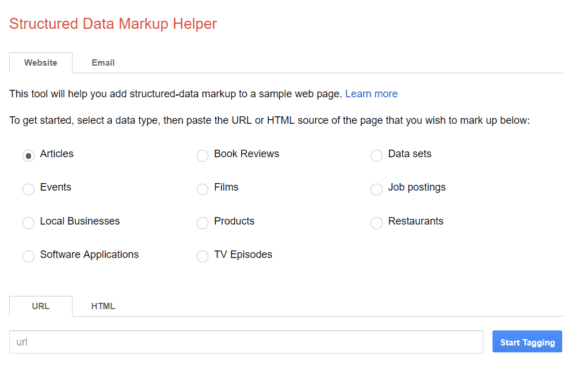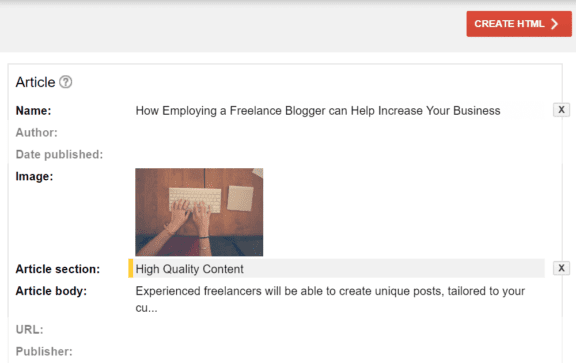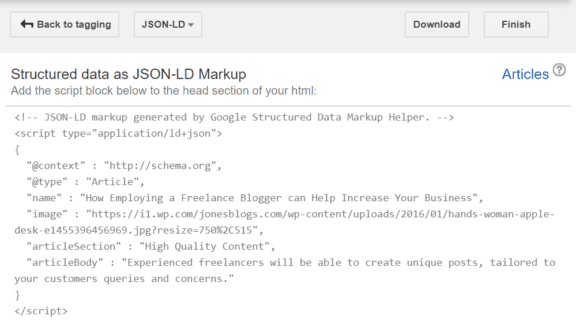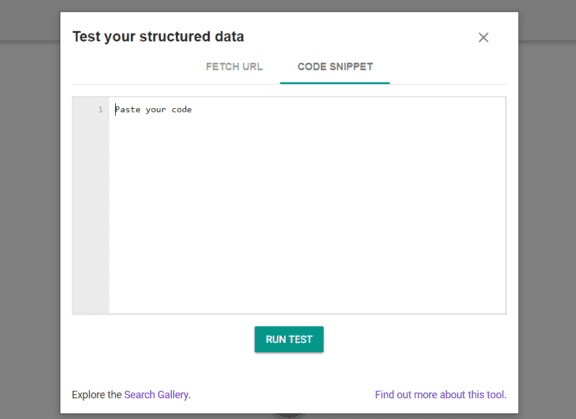Points of discussion include:
Once you have finished reading, you should be able to use this knowledge to improve your website’s SEO. Let’s get startet.
What Is Structured Data and Why Is It Important?

Structured Data is the term used when referring to organized data, or code that has been written in a specific format. In other words, data that has been given ‘a structure’. There are different types of structured data, which can all be used in different ways.
Structured data is made up of strings of numbers and/or letters, that has a clear pattern. Importantly, it can be easily entered, stored, queried and managed. Unstructured data is everything that can’t fit into a neat, classified box, like images, video, emails, blog posts and web pages.
Databases are a common source of structured data. Usually Structured Query Language (SQL) is used to organize and manage data in specific database fields. This structured data can then easily be queried, making it easy to find particular information that is stored in the database, like a customer’s address or clients phone number.
Why Use Structured Data on the Web?
When we talk about structured data on the web (which is the focus of this article), we are usually doing so in relation to SEO. Structured data can help pages and posts rank in the search engines for the right terms, increasing the chances of your content reaching its target audience.
It will also improve how your search results snippets are displayed, including more information about your content. This will help users see if your content is relevant to their search terms, and therefore, help increase your click-through rate.
How Does Structured Data Work on your Website?
To help your web content rank well in the search engines, pages have to be ‘marked up’ with structured data. Marking up is essentially adding code to your website, written in a specific format, that search engines will understand.
When search engine bots crawl your website, this code will ‘speak’ to the search engines, telling them what each piece of content is about. So instead of finding a web page or blog post containing unstructured data, the added code will present structured data, helping the crawlers understand and rank the key points of the content.
By marking up your content with structured data, your content shown in the search engine results will become ‘richer’, as it will be more useful and informative for your audience and more relevant to their search. This is where the term ‘rich snippets’ or, as they are now known, ‘rich results’ comes from.
(Bare in mind that there are no guarantees with Google. Even if you add structured data to your website, there is no certainty that rich snippets will be created for your pages).
So, now we know a little about what structured data is, why it is important and how it works on the web. Next, we will look in more detail at how structured data support SEO.
How Does Structured Data Support SEO?
Using structured data on your website should lead to search engine results for your website being enhanced. These enhancements can differ depending on the content of your site.
Structured data can support and improve your SEO by creating attributes for your content in the form of:
- Rich Results
- Enriched results
- Google Knowledge Graph
- AMP
Let’s now consider each of these in more detail.
Rich Results

Before people buy a book, they like to read the blurb to see what it is about. Rich results act in the same way for websites, providing a descriptive summary of the content of a page or post in search engine results. This helps users know whether your site is what they are looking for or not, improving their web experience. It also means that your site receives people who are interested and satisfied in your content, increasing conversion and lowering bounce rates.
There are numerous rich result’s features, displaying web page content summaries in different formats. Google will enable a set of rich results search features for your page in the search results providing you have added the correct structured data to your pages (We will discuss how to do this further on in this article).
Rich results search features fall into two categories:
- Content Type – Search features are often dependent on your website content. For example, if you run a food blog, search results for your pages may contain recipe info, ingredients, cooking times, and more. However, if you are promoting events on your site, then Google search results may display event descriptions, locations, dates, times and prices.
- Enhancements – These are features that can be applied to more than one type of content.
Let’s first discuss the rich result’s features for different content types.
Content Types

Once you have marked up your site by adding the relevant structured data, rich results are automatically generated based on the code you have used. Google has numerous rich formats that, depending on your content, are used to display results.
Here are some of the most commonly used content types, and the rich results search features that can be displayed for each of them:
- Product – Display detailed product information including image, price, availability and review ratings.
- Article – Show rich result features in Google Search such as headline, text and larger-than-thumbnail images.
- Book – Rich results enable books to be bought directly from search results.
- Course – Mark up a course to provide info including the course name, a short description, and who is offering it.
- Events – Help users to discover your events through Google Search and Google Maps.
- Podcast – Enable your podcasts to appear in Google, alongside individual episode descriptions and an embedded player for each.
- Recipe – Provide rich results that share recipes, ingredients, cooking and preparations times, and much more.
- Video – Show video info such as the description, thumbnail URL, upload date, and video duration.
As you can see, there are a variety of rich results formats that can be displayed, depending on the type of content on your website. Let’s next look at ‘enhanced’ rich results, which are features that can be applied to more than one kind of content type.
Enhancements

Enhanced rich results are features that can be applied to more than one type of content. Here are some of the enhancements that can be used to display your content’s rich results in Google Search.
- Carousel – Use structured data to make your rich results eligible for Carousel (previously known as Rich Cards), a list-like display feature in Google. Content types currently supported for Carousel include Article, Recipe, Film, and Course.
- Logo – Specify the image Google uses for your organization’s logo in the Knowledge Graph (discussed further on) and in search results.
- Corporate Content – Add your companies contact details to the Google Knowledge Graph, so when a user types your company’s name into the search bar, your contact info appears.
- Social Profile – Use markup to display your social links in the Google Knowledge panel.
As mentioned earlier, as well as rich results, structured data can also be used to mark up content to produce ‘enriched results’ in Google. So let’s next check out what enriched results are, and how they can add value to your content in the search engines.
Enriched Results
A relatively new feature, an enriched search result is a more dynamic result type, enabling interactivity. This could take the form of an immersive popup or other advanced interaction feature.
Enriched results are in fact a subset of rich results, so structured data will need to be added to your website pages if you want your content to be shown in an enriched result search experience. Content types that can be marked up to create enriched results in Google include Recipe, Job Posting, and Event content.
Knowledge Graph Results

A business or brand’s Knowledge Graph can be influenced by the structured data added to its website. A Knowledge Graph is made up of a compilation of information from one or more pages on a website. Results displayed on a Knowledge Graph can include the preferred site name, logo, social profile links and more.
AMP
AMP stands for Accelerated Mobile Pages. AMP is a Google-backed project that has been created to help developers and publishers produce pages that load quickly and efficiently on mobile. The AMP open-source library will enable you to create and validate AMP pages, which should then improve their rankings in the search engines.
By adding structured data to AMP pages, the content on these web pages will be able to be featured on Google mobile search, as part of rich results and carousels.
You should now have a good understanding of how structured data can help enhance how your website and individual web pages appear in the search engines. Next, we will consider how structured data can be added to your site.
Schema.org
In 2011, Google, Microsoft, Yahoo and Yandex embarked on a joint project to create a standardized list of entities for structured data on the internet. From this was born Schema.org. which has become the language of structured data on the web.
Schema.org is now an active community, creating, maintaining and promoting schemas for structured data on the internet, on web pages, in email messages, and more. Over 10 million websites use schema to mark up their web pages and emails, with applications including Google, Microsoft, Pinterest, and many others, using this structured data schema to provide rich experiences.
Schema.org vocabulary is compatible with Microdata, RDFa, and JSON-LD markups. Let’s take a closer look at each of these:
- Microdata – A form of semantic markup, Microdata nests structured data within HTML content. It does so by using HTML tag attributes to name the properties you want to expose as structured.
- RDFa – An extension of HTML5, RDFa can help you mark up things like recipes, events, people, places, and reviews. Like RDFa, it uses tag attributes (HTML5) to describe content to the search engines.
- JSON-LD – Using a different approach to markup, JavaScript notation is embedded in a page head or body via a <script> tag.
Schema.org is used by the major search engines and should be your go-to for adding structured data to your website. Google now advise that to implement mark up on your website you should use JSON-LD, which we will look at in further detail next.
JSON-LD
As previously mentioned, JSON-LD is one of the markups of Schema.org, and importantly the preferred method of Google. JSON-LD (JavaScript Object Notation for Linked Data) is a method of encoding Linked Data using JSON. The benefits of using JSON-LD is that it is relatively easy to read and write and to add to your website’s pages.
JavaScript code is displayed in a block on each page. This makes it easy for crawlers to identify the key information displayed in the markup. When adding JSON-LD markup to web pages you can use any Schema.org schema in your JSON-LD block.
How to Add Structured Data to Your Website
To add markup to your pages you don’t need extensive coding knowledge. The easiest option is to use Google’s Structured Data Markup Helper. This tool can help guide you through creating code for different uses.

Simply select the appropriate data type (ie – article, event, book review, etc), enter the URL of the page you would like to markup, and select Start Tagging.

Google will open the page that you would like to add structured data too. You can now tag (highlight) the information you would like to appear in Google from the web page. For example, for an ‘article’ you can tag the name of the article, author, date published, image, and much more.
Once you have tagged all the data from your article you would like displayed in your rich search results, select Create HTML. Google will now display the correct JSON-LD markup for your article.

The JSON-LD script block should then be added below the <head> section of your HTML on appropriate web page.
Google also provides in-depth guides on how to add markup to your site to create rich results for different content types and enhancements. WordPress SEO plugins, such as Yoast SEO, can also be used to help improve SEO. Yoast SEO uses JSON-LD to add information about your site to your website’s pages.
Markup Testing Tools
Once you have marked up your web pages with structured data, there are a number of tools that you can utilize to ensure your markup is correct and working.
Google’s Structured Data Testing Tool

Google’s Structured Data Testing Tool will enable you to test your markup and check if it is working correctly. Simply paste your code into the tool, and then Google will test it, detecting any errors or warnings.
Bing Markup Validator
Bing also has its own structured data testing tool. The Bing Markup Validator can be used to test HTML Microdata, Microformats, RDFa, Schema.org, and OpenGraph. This tool is free to use, but you will need to create an account with Bing Webmaster Tools to get you started.
Bing also provides extensive documentation on SEO, structured data, and how to markup your website for their search engine.
Yandex Webmaster
Yandex webmaster is another effective structured data validator. This tool will enable you to check a number of microformats, including Microdata, Schema.org, OpenGraph, and RDF.
To use Yandex Webmaster, simply enter the URL of the webpage you would like to check or the HTML code fragment. The validator will then check the semantic markup of your webpage to make sure that indexing bots will be able to extract all the data you want to appear in search engine results.
Final Thoughts
As you can see, structured data is an extremely important aspect of any website. But due to its complex nature, it is often overlooked or ignored. Now you have a good understanding of how structured data can be used to help improve your site’s search results in the search engines, it is time to ensure that your pages and posts are correctly marked up. Ready to get started?
Have you got any questions on adding structured data to your website? If so, please feel free to ask away in the comments below.





Thanks for sharing such a nice topic. I couldn’t find any information on this matter prior to. Also work a site and if you are ever interested in doing some visitor writing for me if probable feel free to let me know, I’m always look for people to check out my web site. I know your know-how on this. I must say we should have an online conversation on this. Writing only commentary will close the discussion without delay away! And will restrict the benefits from this in turn.
This article is much helpful for the computer science students to get the study guide for the subject.
I can also at this time look forward to my future. Thanks for your time so much for your high quality and result oriented guide. Thanks for one’s marvellous posting! I genuinely enjoyed reading it, you could be a great author. I will make certain to bookmark your blog and will eventually come back very soon.
nice web site. keep going